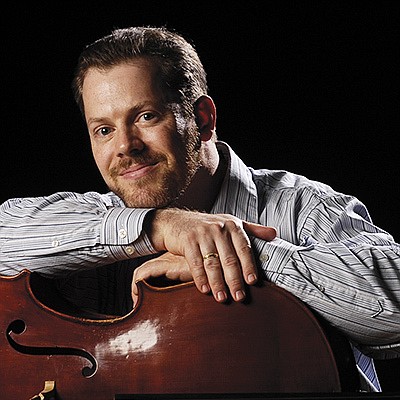- November 23, 2024
-
-
Loading

Loading

It’s not every day we have the chance to hear a concert centered around the cello. But last week, the Sarasota Orchestra’s Chamber Soiree Series offered a program called “Cello Time” and the packed house (we couldn’t find an empty seat anywhere) got to hear music that not only featured the mellow cello, but also spanned four centuries and more cellos than you could shake a bow at.
Eight cellists (Jake Muzzy, Chrstopher Schnell, Isabelle Besancon, Chizuko Matsusaka, Barney Culver, Nadine Trudel , Betsy Isaak and Troy Chang) with percussionist Jeff Ridgeway, tackled Arvo Pärt’s “Fratres,” a work that’s been heard in numerous films and has been scored for a variety of instruments from string orchestra to, well, eight cellos and percussion. It’s basically what I call “meditation music;” trance-like and mesmerizing. It was beautifully played with all the musicians, from those playing the drone-like bottom to the ethereal harmonics, with a spellbinding sculpting of dynamics that was both musical and scientific in its approach.
Before cellist Christopher Schnell laid into Bach’s Cello Suite Number 6 in D, he told us that, like Ricky Ricardo, he had some “s'plainin’ to do.” With that, he showed us an early cello, known as a Violincello Piccolo, a replica of a 1722 English instrument that uses gut strings, tunes the “A” to a lower pitch than the one we use today (415 as opposed to the modern 440), has no end-pin but, rather, sits on a box and has not four but five strings. The proof was in the performance which had a softer, more muffled sound instead of the brighter tone we’re used to hearing from modern cellos.
Bach wrote this D Major Suite specifically for this kind of instrument, and since it’s designed for a solo cello (no keyboard), the genius of the composer was to fill in the chords on the single instrument. Like the Pärt, but coming from a much earlier time, it’s mesmerizing, and Schnell, who must have had a difficult time switching from his modern cello to a smaller one with five strings, overcame the travails of the tuning to give us a compelling and hypnotic performance.
The intermissionless concert concluded with Haydn’s C Major Cello Concerto performed by Jake Muzzy with a small Sarasota Orchestra ensemble led by violinist Christopher Takeda. It was almost jolting to hear the “A” back up to 440 and, I have to admit, somewhat cheering. On top of the brightness of the Haydn compared with the Bach, we were also reminded of the cello sound we’ve grown accustomed to hearing: rich, warm and vibrant, with metal strings. And Muzzy, who really digs into his instrument, gave us a well-rounded performance that was both absorbing and stylistic.